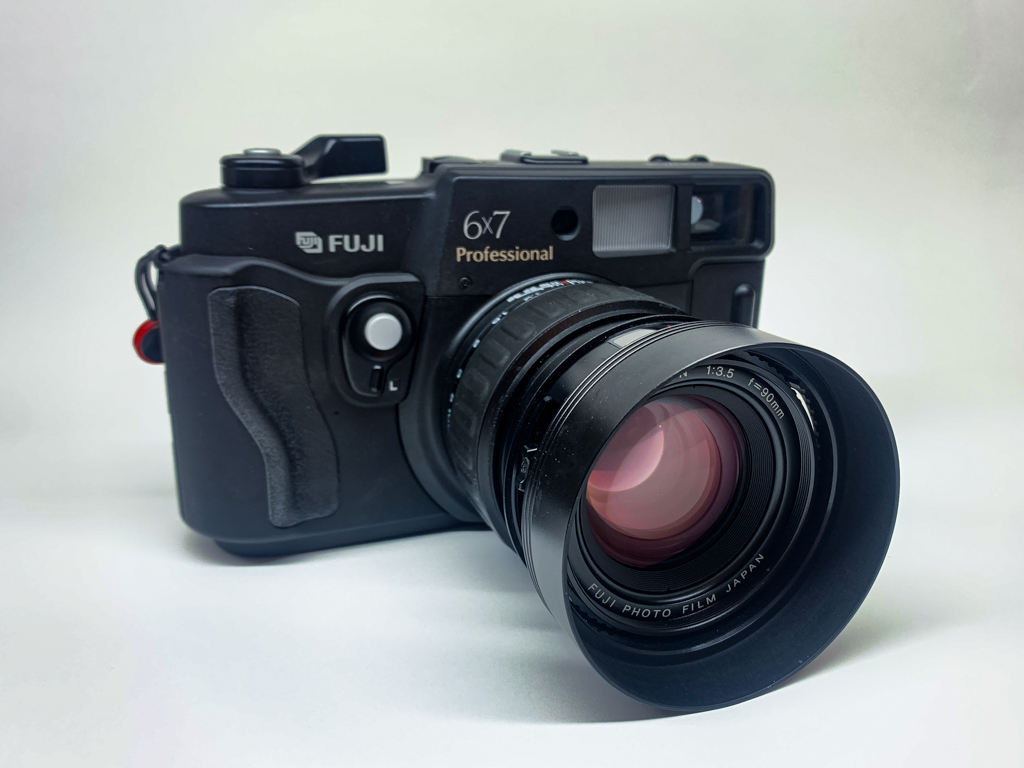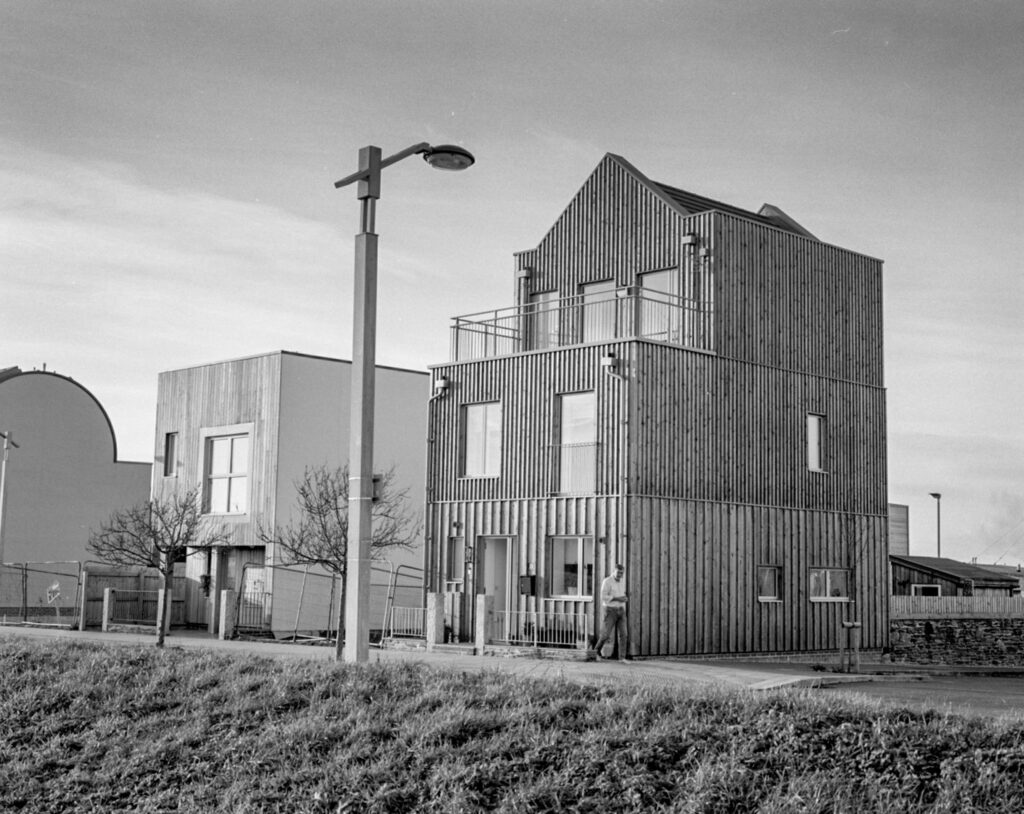
Well this Fuji GW670III is not exactly new, as I acquired it in November of 2022, but it’s been a while since I updated the toy section.
You may have noticed the last two cameras added to my collection were rangefinders. While this technology has been around since the 1930’s, they fell out of favour in the 1970’s when SLR’s became all the rage.
The Mk3 version of this lineup of huge neg rangefinders were made in the mid 1990’s, but the genesis of these go back to 1967 with the introduction of the G690 with its huge 6x9cm negative and a range of three lenses ranging from a 65mm to a 180mm and towards the end of the Mk2 version, there was even a 100mm autofocus f/3.5. In later years Fuji offered 6×8 and 6×7 versions for those that preferred the less wide aspect ratio.
The MK3 was the last iteration of the series. With its more rounded plastic exterior – which some think is too plasticy and fragile, which it really isn’t – the various format sized bodies were now only equipped with fixed Fujinon lenses.
While Fuji may not have intended this, the popularity of these models was determined by a somewhat unusual group of photographers. Because these were purely mechanical cameras with a very high degree of reliability, most of these cameras were used in the thriving and rather unglamourous business of photographing tour groups – almost exclusively in Japan. The buses at tour locations would discourge their passengers and they would all stand to have their group photograph taken. By the time they had done their sightseeing, the film had been developed and made into prints, which were handed back to the visitors as they got back on the bus.
The GW670III I have, started production in March of 1992 and was only intended for the export market. I don’t know what the GW670 sold for when new, but the 690 versions cost 179,000 yen. At 2023 prices, this is about £1100. This roughly what I paid for mine, so that’s not a bad depreciation over 31 years.
So why my newfound passion for rangefinders. I guess it’s down to two big factors. Simplicity and weight. Medium format is generally a heavy and complicated business. Pentax 67, Bronica 6×6, Hasselblad etc etc. are heavy beasts. Apart from the Hasselblad, they also rely on electronics to function and come with a massive array of lenses. While that is great from a Toy collectors viewpoint, Using them in the field is a muscle busting exercise. If you want to shoot medium format, but want something that is simple to use and only weighs 1.5kg, then the rangefinder is the way to go.
When I started looking, I originally lusted after the Mamiya 6. OK, it did have interchangeable lenses, which was something I was trying to avoid, but it did have inbuilt AE metering, which would mean no separate light meter to carry as well. The big downer is, you are looking at upwards of £2500 for a body and std lens. The problem spending that kind of money on a camera that has unrepairable 1980’s electronics, was a risk too far me.
I then looked at the G690. You got the interchangeable lenses and they didn’t have any electronics at all, which would have been perfect, but that 6×9 format was just too wide for my liking. There were few G670’s around, but not many and they were all in a shocking condition – not to mention a lot more pricey, if you wanted to get the wider field and really slow 60mm f/8 as well. They also seem to suffer from busted screen curtains, which means you could never change the lens mid-roll, without exposing your previous shots.
In the end I found the GW670III. The were few and far between and the one I eventually ended up with was available from a UK seller – so no taxes or VAT and was in mint condition. I’m much more comfortable with the 6×7 format and the fixed 90mm f/3.5 is just wide enough. I’m actually quite happy that the lens is fixed, so having to decide what lens to fit or take with you, never arises.


There are a couple of first light from a roll of FP4 developed in a stock solution of Kodak Xtol